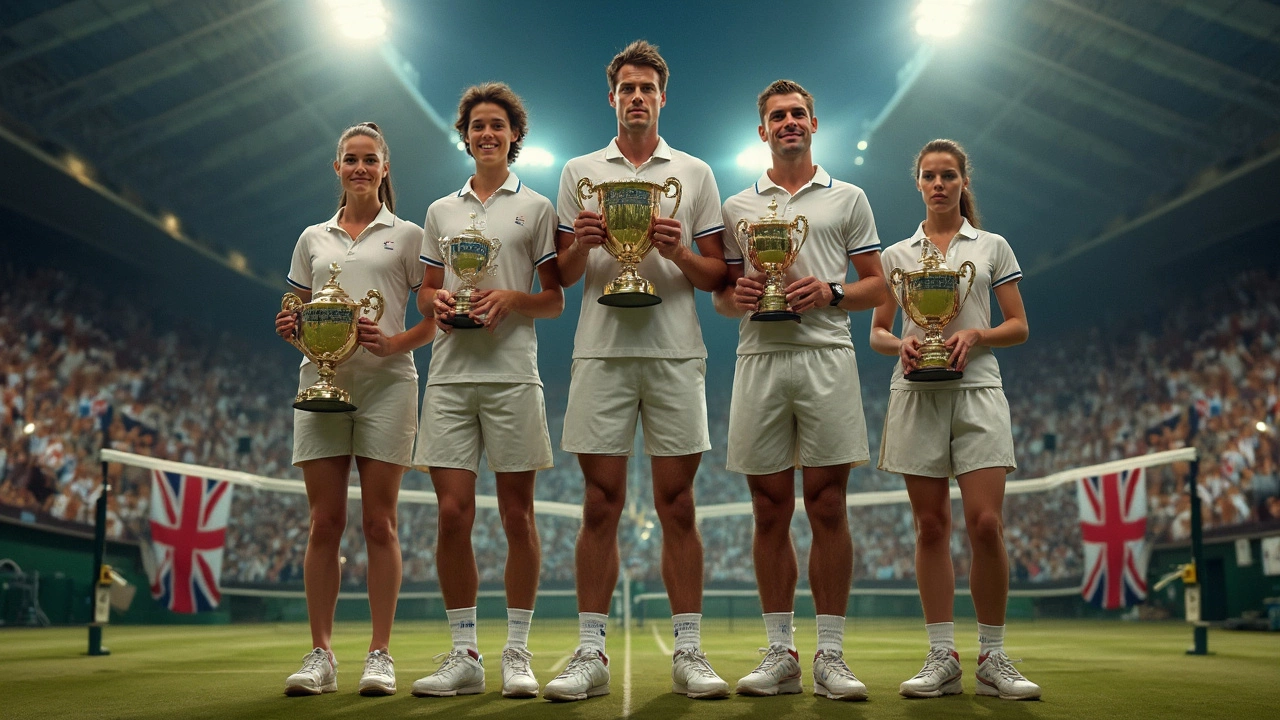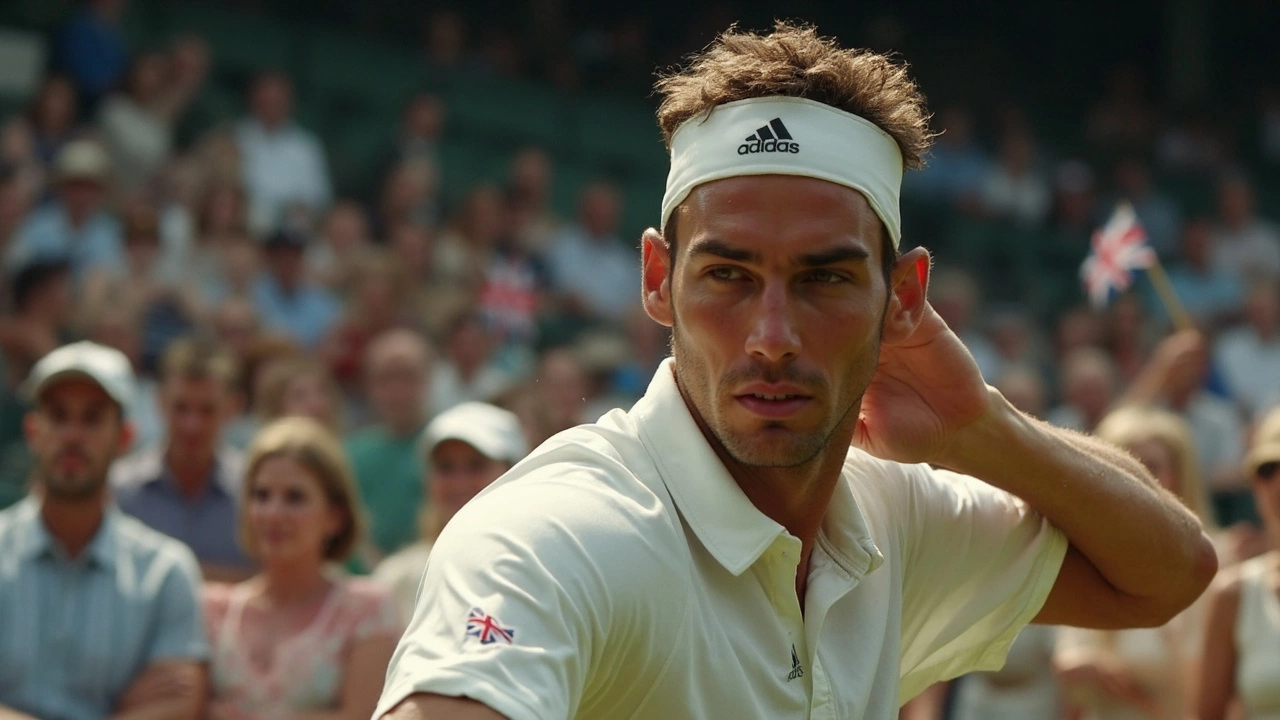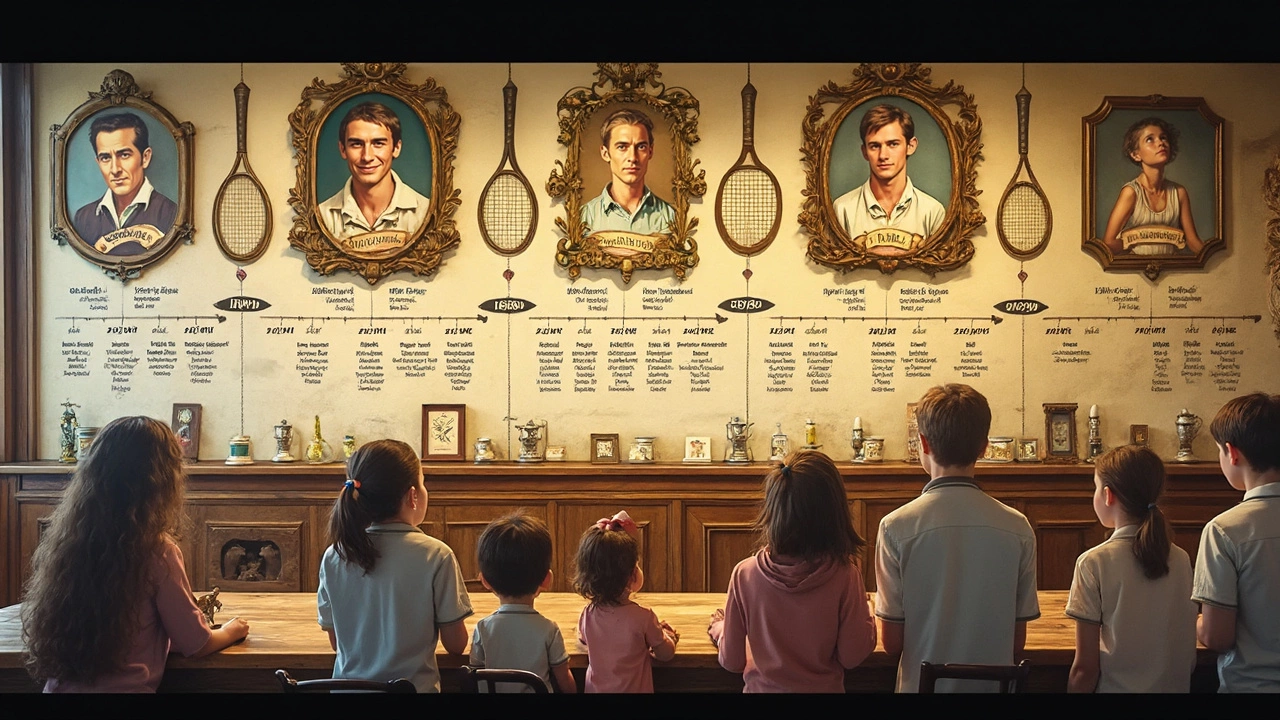Tennis Grand Slam: Has Any Player Won All Four Majors?

If you’ve ever wondered whether anyone’s managed to win all four tennis majors in one year, you’re not alone. Tennis fans toss around the term “Grand Slam” all the time, but most people don’t actually know how rare it is.
Let’s clear something up right away: in tennis, there are four big tournaments that really matter when people talk about majors — the Australian Open, the French Open, Wimbledon, and the US Open. Winning just one is a huge achievement. Bagging all four in the same calendar year? That’s nearly impossible and only a tiny handful have ever pulled it off.
Most players, even the superstars, spend their entire careers chasing just one or two of these trophies. Each surface brings its own problems: bouncing balls on clay in Paris, dealing with grass in London, the hard courts down under and in New York. The style and pace could throw off even the best in the world.
If you’re watching tennis and someone mentions a “Grand Slam,” now you know it’s not just any set of wins. It’s the ultimate challenge, and the story behind those who did it is wild. There’s a lot more to unpack, including who’s done it, who’s come heartbreakingly close, and why this challenge is on an entirely different level.
- What Is a Grand Slam?
- The Legends Who Did It
- Close Calls and Heartbreaks
- Career Grand Slam Explained
- What Makes It So Tough?
What Is a Grand Slam?
If you hang around tennis fans, you’ll hear the phrase “Grand Slam” tossed into almost every conversation. But what does it actually mean? In tennis, "Grand Slam" is all about winning the four huge events: the Australian Open, French Open, Wimbledon, and US Open. These are the majors. Each one is played on a different surface, in a different country, at a different time of the year, and winning just one of them can make a player’s career.
The real deal, though, is taking home all four in a single calendar year. That’s what people mean by "the Grand Slam." It’s hands-down the hardest thing to do in tennis. To make things clear, here’s a quick breakdown:
- Australian Open: Hard court, played in Melbourne, usually in January.
- French Open: Clay court, played in Paris, usually in late May to June.
- Wimbledon: Grass court, played in London, late June to July.
- US Open: Hard court again, played in New York, from August to September.
The surfaces really matter. For example, clay at the French Open is a nightmare for players who rely on fast shots and slick moves, while Wimbledon’s grass court makes the ball zip in ways some players never quite get used to.
When someone wins all four majors in one year, they’ve pulled off the toughest feat in tennis. That is not the same as a "career Grand Slam," which means winning each of the majors at least once, but over the course of your career, not in a single season.
| Grand Slam Tournament | Surface | Location | Month |
|---|---|---|---|
| Australian Open | Hard | Melbourne | January |
| French Open | Clay | Paris | May–June |
| Wimbledon | Grass | London | June–July |
| US Open | Hard | New York | August–September |
So, when someone asks, "Has any tennis player won all four majors?"—remember, scoring a grand slam is ultra-rare, because everything from travel to weather and even the ball itself switches up across these tournaments. That’s what sets this achievement apart from just winning titles here and there.
The Legends Who Did It
This is where the real stars of tennis step into the spotlight. Only a handful of players have actually won all four majors—meaning they swept the Australian Open, French Open, Wimbledon, and US Open in the same calendar year. This is what everyone dreams about, but almost no one achieves.
Let’s get specific. Here are the few who accomplished the true calendar Grand Slam:
- Don Budge (1938): He was the first ever to bag all four in a single year. This was back when racquets were made of wood and the sport looked pretty different, but it counts all the same.
- Maureen Connolly (1953): Nicknamed "Little Mo," she got her Grand Slam at just 18 years old—crazy when you think about it. She dominated the women's game in the early fifties.
- Rod Laver (1962 & 1969): This guy did it twice—once as an amateur and once as a pro. That’s a record that still stands alone in men's tennis. Laver’s achievement in 1969 is especially legendary since he had to go through tough pros after the Open Era began.
- Margaret Court (1970): She knocked out all four majors, and even went on to collect a total of 24 Grand Slam singles titles (the all-time record). Her 1970 season was absolutely brutal for anyone who faced her.
- Steffi Graf (1988): She was the last to do it, and no one’s done it since. What makes Graf extra special? She also won the Olympic gold that year, making it a "Golden Slam" that nobody else has matched.
Here’s a quick table so you can see it at a glance:
| Player | Year | Majors Won |
|---|---|---|
| Don Budge | 1938 | Australian, French, Wimbledon, US |
| Maureen Connolly | 1953 | Australian, French, Wimbledon, US |
| Rod Laver | 1962, 1969 | Australian, French, Wimbledon, US |
| Margaret Court | 1970 | Australian, French, Wimbledon, US |
| Steffi Graf | 1988 | Australian, French, Wimbledon, US |
So, yeah, completing a true grand slam is super rare. Even tennis’s biggest legends like Serena Williams, Roger Federer, Rafael Nadal, and Novak Djokovic haven’t pulled it off in a single calendar year, even though they’ve racked up wins across all the majors at some point in their careers. That gives you an idea of just how tough this challenge really is.

Close Calls and Heartbreaks
Here’s the thing—getting close to a grand slam is almost more impressive than winning it, just because of how impossibly hard it is to stay perfect all year. Plenty of legends have come up just short, and those near-misses are still talked about today.
Probably the most famous close call is Serena Williams in 2015. She won the Australian Open, French Open, and Wimbledon, so everyone was buzzing about whether she’d pull it off at the US Open. It looked like a sure thing, but she got upset in the semifinals by Roberta Vinci—a match nobody saw coming. The upset shook the tennis world, and fans still debate that moment at every major.
Novak Djokovic has also found himself painfully close. In 2021, he captured the Australian Open, French Open, and Wimbledon. He only needed the US Open to make tennis history, but Daniil Medvedev stunned him in the final and ended the dream. The pressure and hype had built all year, just to fall flat at the very end.
If you look further back, Martina Navratilova was red-hot in 1984, holding all four major titles at the same time, but not in a single calendar year—so close, but it doesn’t officially count as a Grand Slam. Roger Federer, meanwhile, never pulled off three majors in one season but finished his career just one French Open shy of capturing every major at least once during his prime.
| Player | Year | Missed Major |
|---|---|---|
| Serena Williams | 2015 | US Open (Semifinals) |
| Novak Djokovic | 2021 | US Open (Final) |
| Martina Navratilova | 1984 | Australian Open (Timing out of calendar year) |
| Roger Federer | 2006, 2007, 2009 | French Open |
The heartbreaks don’t just stay with the players. Fans remember exactly where they were when these big upsets happened—people still bring up Vinci’s crazy win over Serena or Medvedev’s breakdown of Djokovic’s game. The nerves, the media glare, and the tiny margin for error make chasing all four majors the stuff of high-drama sports. Every year, a new favorite tries. Sometimes they get close, and sometimes, dreams crash in one bad match.
Career Grand Slam Explained
You might hear the term "Career Grand Slam" thrown around on tennis broadcasts or social media, but what does it actually mean? Basically, if a player wins each of the four major singles tournaments—Australian Open, French Open, Wimbledon, and US Open—at least once during their career, that's a Career Grand Slam.
This isn't the same as snagging all four in the same year (that’s called a Calendar Grand Slam, and it’s even rarer). The Career Grand Slam is super tough, too, because each major is played on different surfaces. Clay, grass, and hard courts all demand unique skills and strategies, so most players end up struggling with at least one of them. For instance, Rafael Nadal’s game seems made for clay, but it took him a while to win his first Australian Open.
If you’re curious about who’s actually got a Career Grand Slam under their belt, here are some names you’ll know:
- Serena Williams
- Roger Federer
- Rafael Nadal
- Novak Djokovic
- Steffi Graf
- Chris Evert
- Martina Navratilova
Check out this simple table to see how many have actually done it in the Open Era (since 1968):
| Player | Men/Women | Year Completed |
|---|---|---|
| Steffi Graf | Women | 1988 (Calendar Grand Slam too!) |
| Serena Williams | Women | 2003 |
| Roger Federer | Men | 2009 |
| Rafael Nadal | Men | 2010 |
| Novak Djokovic | Men | 2016 |
A few older legends, like Rod Laver and Billie Jean King, also managed the feat, but the list above zooms in on the modern era.
Remember, even some of the biggest names in tennis—like Pete Sampras—fell short of this grand slam mark just because they couldn’t crack one surface. It’s a reminder of how wild and unpredictable this sport can be!

What Makes It So Tough?
You might think that being at the top of the tennis world makes pulling off a grand slam just a matter of winning a few extra matches, but it’s way harder than it sounds. Each major is on a different surface—hard, clay, or grass—and every surface messes with your style. Most players are strong on one or maybe two of these, but dominating all four in a single year is next-level.
Then there’s the grind. Majors are packed into a six-month stretch. You get the Australian Open in January, the French Open starts in late May, Wimbledon’s just a few weeks after that, and the US Open comes end of August. Between all that, you’re constantly traveling across continents, switching time zones and dealing with injuries. The stress is unreal. Steffi Graf once said,
"People think it's just about playing well, but it's also about staying healthy, staying focused, and holding your nerve for months—every match, every point."
As if the schedule and surface changes aren't enough, there’s the mental game. Everyone’s out to get you. When you’re chasing all four majors, your opponents circle your name on the draw. They don’t want to be the ones losing to history.
| Year | Player | Surface Order (Majors) | Total Matches Won |
|---|---|---|---|
| 1969 | Rod Laver | Hard, Clay, Grass, Grass | 28 |
| 1988 | Steffi Graf | Hard, Clay, Grass, Hard | 28 |
Look at the numbers. Rod Laver and Steffi Graf had to win at least 28 matches in a calendar year, across totally different courts, against the best in the world. Graf managed it in 1988—and snagged Olympic gold along the way, which nobody else has done. They both fought off fatigue, injuries, and all the pressure that comes with being the favorite everywhere they played.
Even the top dogs like Roger Federer, Serena Williams, and Rafael Nadal never won all four in a single year. It tells you how brutal and unforgiving the chase is. That’s why every Grand Slam in tennis history stands out as one of sport’s gnarliest achievements.
